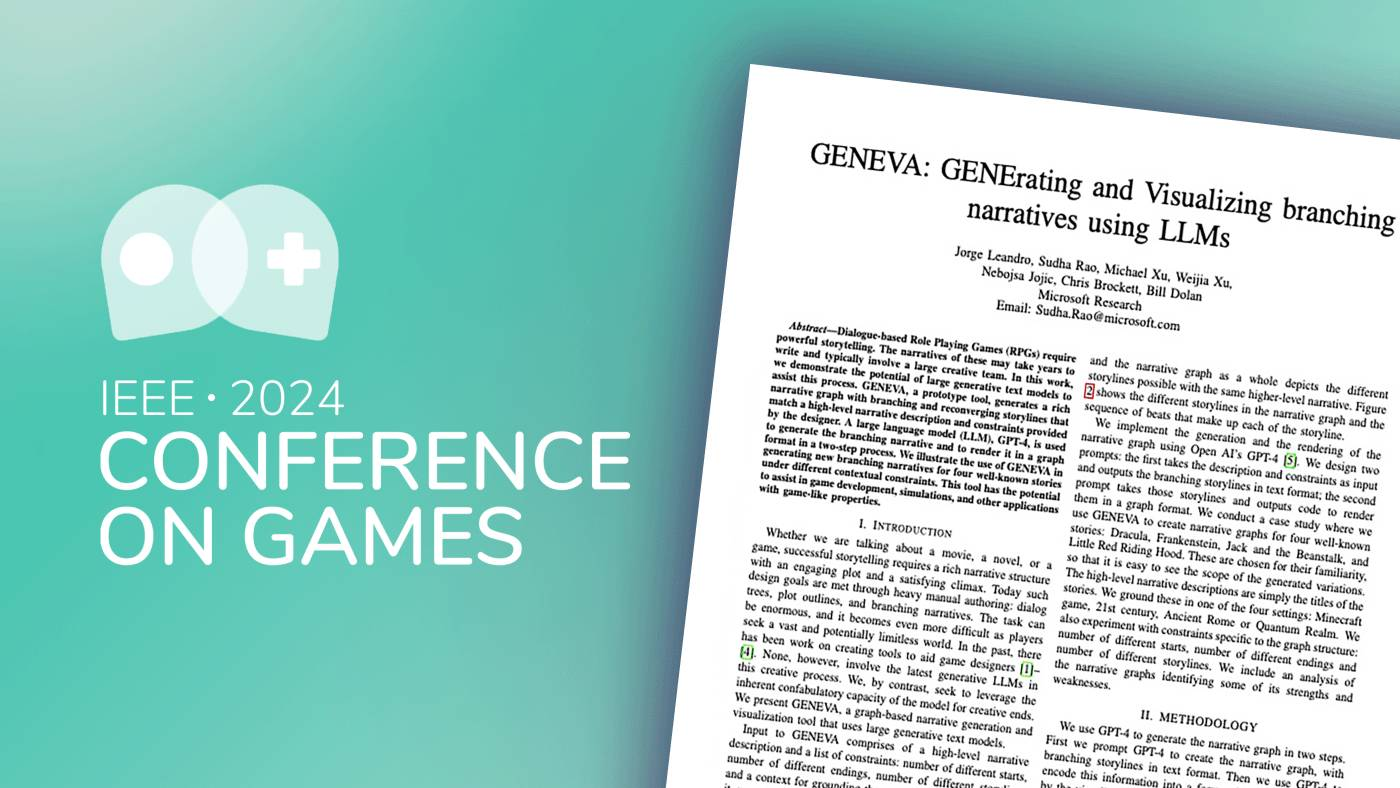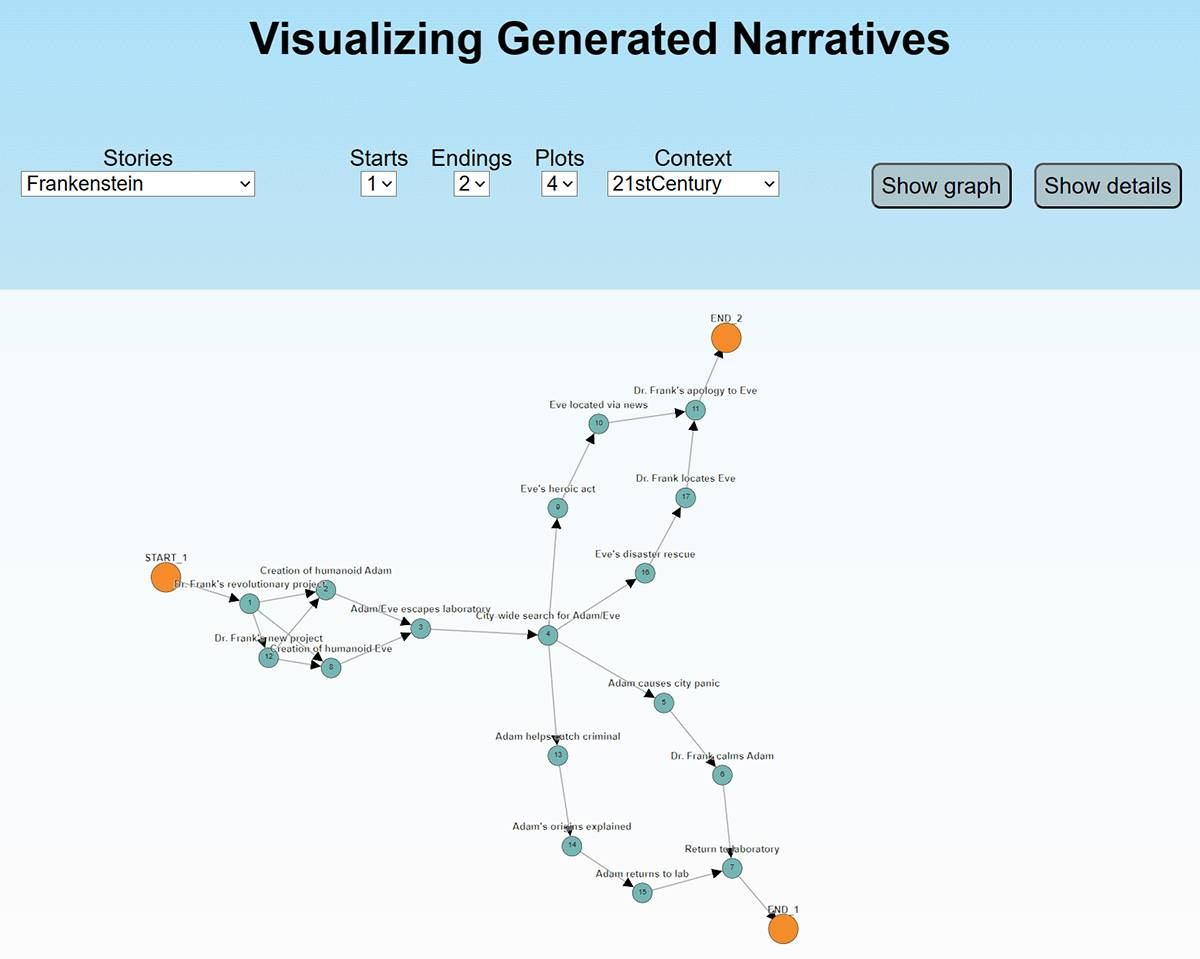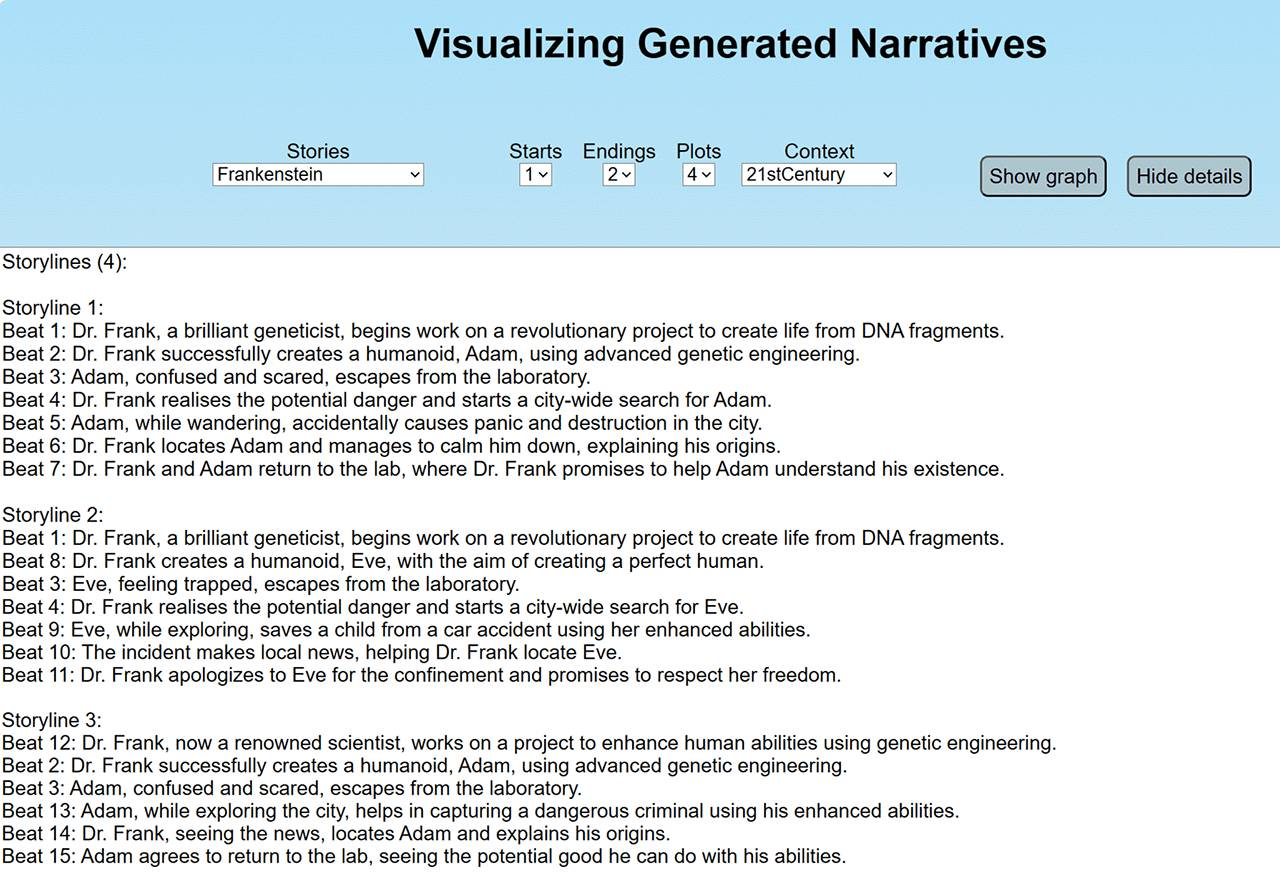包阅导读总结
思维导图:
文章来源:microsoft.com
作者:Brenda Potts
发布时间:2024/8/5 16:00
语言:英文
总字数:706字
预计阅读时间:3分钟
评分:90分
标签:AI in Game Development,Large Language Models (LLMs),Narrative Design,Interactive Storytelling,Microsoft Research
以下为原文内容
本内容来源于用户推荐转载,旨在分享知识与观点,如有侵权请联系删除 联系邮箱 media@ilingban.com
This paper was presented at the IEEE 2024 Conference on Games (opens in new tab) (IEEE CoG 2024), the leading forum on innovation in and through games.

Mastering the art of storytelling, a highly valued skill across films, novels, games, and more, requires creating rich narratives with compelling plots and characters. In recent years, the rise of AI has prompted inquiries into whether large language models (LLMs) can effectively generate and sustain detailed, coherent storylines that engage audiences. Consequentially, researchers have been actively exploring AI’s potential to support creative processes in video game development, where the growing demands of narrative design often surpass the capabilities of traditional tools. This investigation focuses on AI’s capacity for innovation in storytelling and the necessary human interactions to drive such advances.
In this context, we introduce “GENEVA: GENErating and Visualizing branching narratives using LLMs (opens in new tab),” presented at IEEE CoG 2024. This graph-based narrative generation and visualization tool requires a high-level narrative description and constraints, such as the number of different starts, endings, and storylines, as well as context for grounding the narrative. GENEVA uses the generative capabilities of GPT-4 to create narratives with branching storylines and renders them in a graph format, allowing users to interactively explore different narrative paths through its web interface (opens in new tab).
Visualizing narratives using graphs
The narrative graph itself is a directed acyclic graph (DAG), where each node represents a narrative beat—an event that moves the plot forward—with directed edges (arrows) marking the progression through the story’s events. These beats are the fundamental units of the narrative structure, representing the exchange of action and reaction. A single path from a start node to an end node outlines a unique storyline, and the graph illustrates the various potential storylines based on the same overarching narrative.
The generation and visualization of these narrative graphs are accomplished using GPT-4 in a two-step process. First, the model generates the branching storylines from the given description and constraints. Second, it produces code to render these narratives in a visually comprehensible graph format.
We detail this methodology in our paper, through a case study where we used GENEVA to construct narrative graphs for four well-known stories—Dracula, Frankenstein, Jack and the Beanstalk, and Little Red Riding Hood. Each was set in one of four distinct worlds: the game of Minecraft, the 21st century, ancient Rome, and the quantum realm. Figure 1 shows a narrative graph of Frankenstein set in the 21st century, and Figure 2 shows the storylines generated for this story.


Ideas: Exploring AI frontiers with Rafah Hosn
Energized by disruption, partner group product manager Rafah Hosn is helping to drive scientific advancement in AI for Microsoft. She talks about the mindset needed to work at the frontiers of AI and how the research-to-product pipeline is changing in the GenAI era.
Opens in a new tab
Assessing GENEVA’s narrative adaptations
In our assessment, we found that GENEVA performed better in specific narrative contexts. For example, in Frankenstein’s adaptation to the 21st century, the storylines included themes like creating life from DNA fragments and genetic engineering, maintaining relevance while preserving the original story’s essence. However, upon closer examination, we noted areas for improvement, such as the need for more variety and better grounding of the narrative. Generally, stories that are better known and more thoroughly documented tend to yield richer and more varied adaptations.
Implications and looking forward
GENEVA remains a prototype, serving as a tool for exploring the narrative capabilities of LLMs. As these models evolve, we anticipate corresponding advances in their narrative generation abilities. The ultimate goal in game design is to engage players with compelling interactive experiences. With the skilled input of experienced game designers, tools like GENEVA could increasingly contribute to creating engaging gameplay experiences through iterative refinement of narrative paths.
Our collaboration with Xbox and Inworld AI (opens in new tab) continues to advance the use of AI in game development, incorporating these developments into practical tools for creators. Discover more about this transformative technology by watching this video (opens in new tab).
Opens in a new tab
